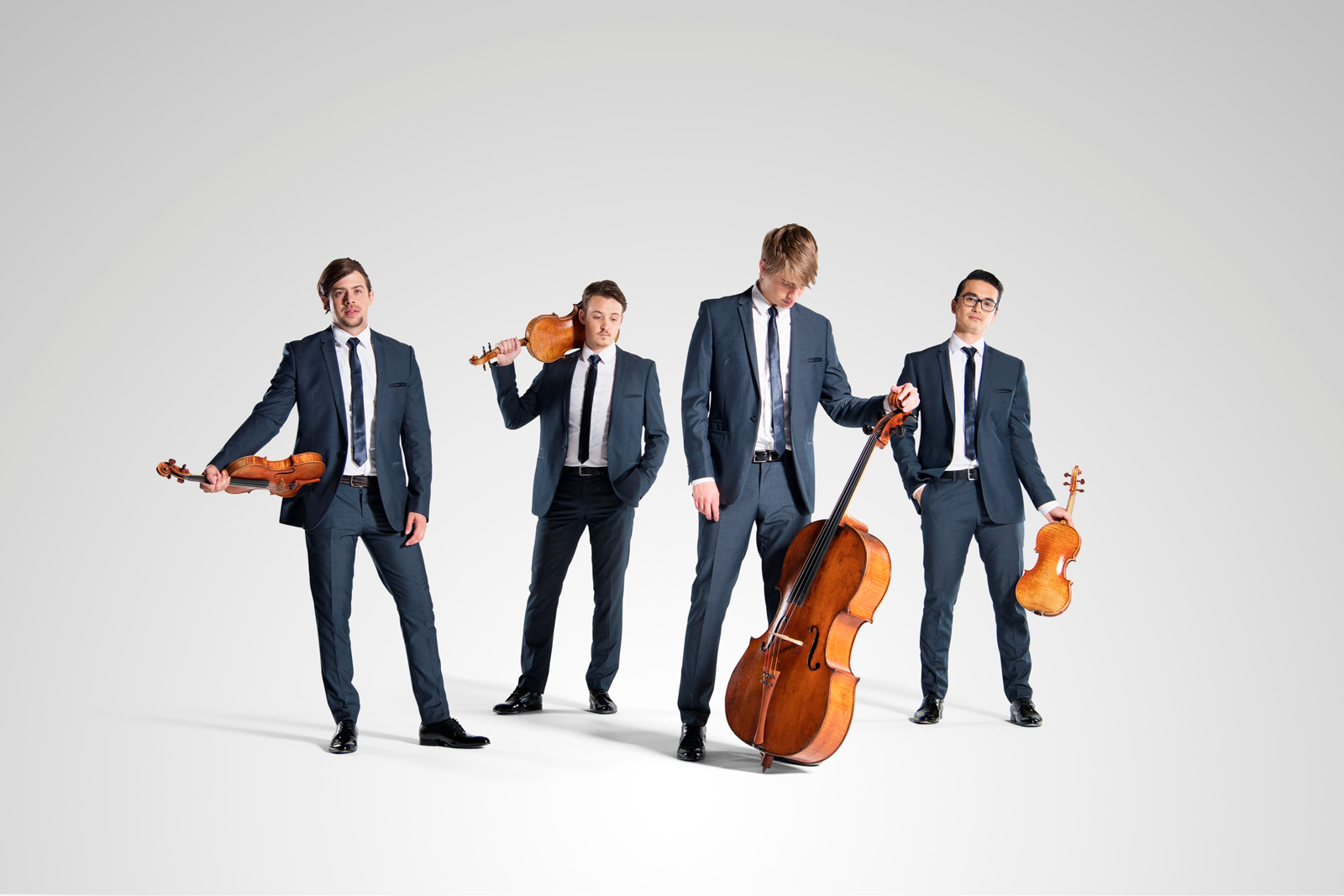The Orava Quartet hit the dramatic opening of Schubert’s ‘Death and the Maiden’ String Quartet in D Minor with crisp authority, cleaving the gestures into the silence of the Sydney Opera House’s Utzon Room, before taking a more thoughtful tack in the quiet response – and fizzing with energy as they leapt into the Allegro proper.
 The Orava Quartet: Daniel Kowalik, Thomas Chawner, Karol Kowalik and David Dalseno. Photo © Dylan Evans Photography, courtesy of Universal Music Australia
The Orava Quartet: Daniel Kowalik, Thomas Chawner, Karol Kowalik and David Dalseno. Photo © Dylan Evans Photography, courtesy of Universal Music Australia
The concert was the first in the ensemble’s Death and the Maiden tour (though they aired the Schubert at the recent Tasmanian Chamber Music Festival) which will see them take this staple of the quartet repertoire – written in 1824, late in Schubert’s life – to Victoria and Queensland. It’s music well suited to the group, which has become known for its spirited performances, and they brought a taut intensity to this performance, lower strings motoring and the four musicians shooting running figures around the ensemble.
The Utzon’s Room acoustic is perilously exposing for strings (vocal groups seem to fare better there) and there were occasional moments when intonation went ever so slightly awry in the fast, high register passages, but the fierce energy never relented, and it was only in a few moments of ferocious motoring in the first movement’s development that there was any hint of rhythmic uneasiness – quickly left in the ensemble’s wake.
The players brought an affecting simplicity to the Andante con moto, taking the tempo instruction at its word and giving a flowing account of the opening of the movement – variations on the melody from Schubert’s lied Der Tod und das Mädchen, from which this quartet takes its nickname – which featured shimmering melodic lines from Daniel Kowalik and a beautifully burnished solo from Karol Kowalik on cello. The Oravas offset the bold figures of the Scherzo with a particularly sweet, playful Trio, before dispatching a dark, scurrying finale.
The concert opened in a very different musical world, with two examples of 16th-century polyphony – a vibrant rendition of the O Magnum Mysterium by Spanish composer Tomás Luis de Victoria and a more tranquil, almost elemental account of the English William Byrd’s Ave Verum Corpus, the players withholding all but the subtlest of vibrato, producing clean, direct lines. In a cameo appearance, Canadian violinist Alexandre Da Costa joined the Oravas as soloist in August Wilhelmj’s Siegfried-Paraphrase (Wilhelmj was concertmaster for Wagner’s Der Ring des Nibelungen at the first performance at Bayreuth) in a version for violin and string quartet. Da Costa coaxed a rich, dark sound from his Stradivarius, digging into the low register and shimmering at the top of the opening solo as the Oravas entered below. A lush performance – though a little on the syrupy side after the lean motets.
All in all, an engaging concert, at the heart of which was a fresh, energetic take on a classic of the quartet repertoire.
The Orava Quartet tours Death and the Maiden to Coomera, Queensland on November 14, Melbourne Recital Centre on November 20 and Newcastle Art Gallery on November 21











Comments
Log in to join the conversation.